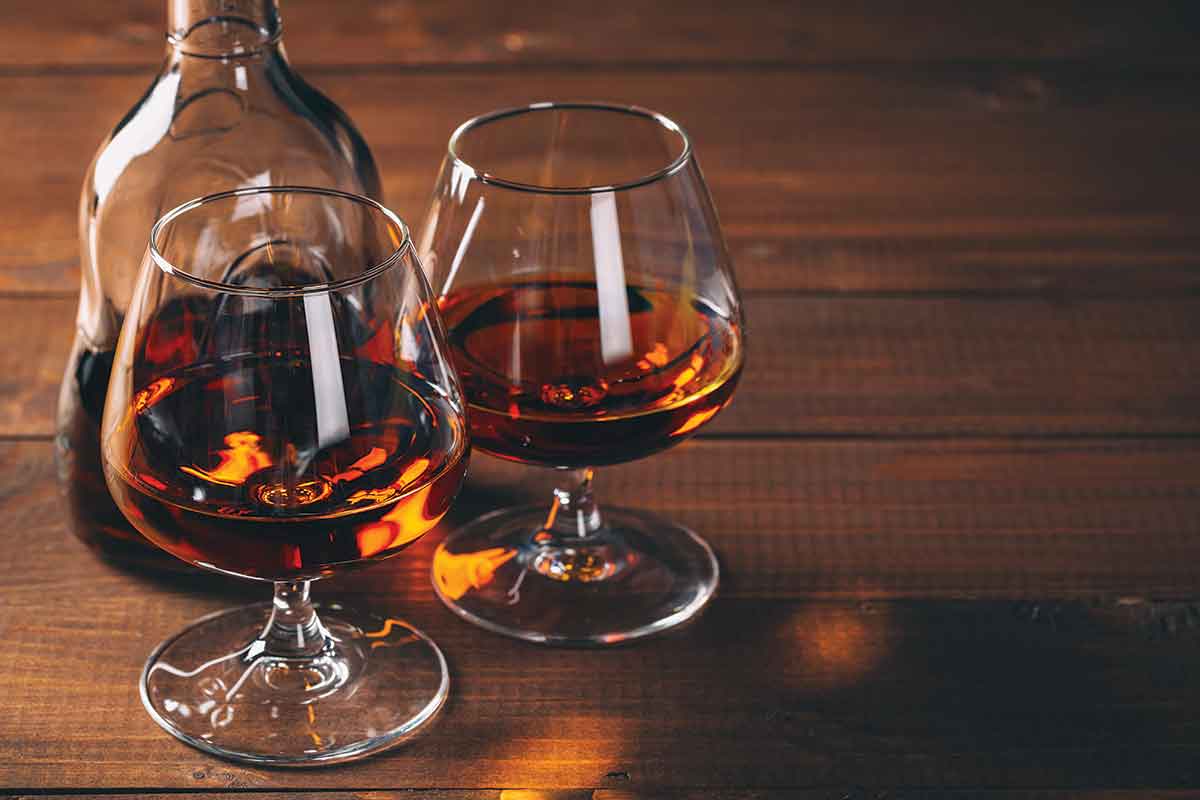Is cognac the same thing as brandy? What about grappa or pisco? Are they brandies too? Let’s take a few moments to clear things up once and for all. Consider this your starter’s guide to exploring the intricacies of the different brandy types.
Cognac is a Type of Brandy
Brandy refers to any spirit distilled from any type of fruit. Cognac, then, is a type of brandy. But cognac is also a geographical indication. Cognac must be made in Cognac, France, and falls under strict AOC requirements for production and place of origin. It’s a grape brandy which must be double distilled in copper pot stills and matured in French oak casks for a minimum of two years.
 Cognac
Cognac
While cognac can be made with several different grapes, one variety reigns supreme: ugni blanc. This grape accounts for approximately 98 percent of the growth and production in Cognac.
More important than the choice of grape is where those grapes are grown. Cognac is split into six sub-regions, including Grand Champagne, Petite Champagne, Borderies, Fins Bois, Bons Bois and Bois Ordinaires. This is where distinctive house styles often come from. For instance, half of all Borderies production is used by Martell, whereas Rémy Martin relies solely upon grapes from Grand Champagne and Petite Champagne.
Aging Requirements for Cognac
Cognac is classified by age, with official designations including VS (two years minimum), VSOP (four years), Napoleon (six years), XO (10 years), and the newest designation XXO (14 years), though different houses often have higher internal minimum thresholds. There’s also the unofficial category of Hors d’Âge, signifying a prestige product beyond XO. Typically these cognacs would be aged from 30-50 years and beyond.
All cognac is blended. In fact, a vast number of different eaux-de-vie, made at different times, may be included in a final blend (prior to blending, individual parcels of cognac are also known as eau-de-vie). A cognac’s age therefore represents the minimum of any individual eau-de-vie used in the blend.
More French Brandy Types
Cognac isn’t the only noteworthy aged brandy from France, either. There are two other major French brandy types to know: armagnac and calvados.
Armagnac hails from Gascony, and while its most commonly used grapes overlap with cognac, its production is otherwise different. It’s single distilled, rather than double distilled. Furthermore, it’s predominantly distilled in a type of column still. Small, portable stills are often taken from vineyard to vineyard across the region during harvest and production season.
Armagnac features a similar aging classification system as cognac, with VS, VSOP, XO, and Hors d’Âge, though the age requirements are slightly different. Far more common in Armagnac though is the use of single year vintages.
Calvados, meanwhile, is an apple brandy made in the Normandy region. It’s distilled from cider, and hundreds of apple varieties can be used in production. Most calvados are made via single distillation using a column still, though double pot still distillation is also used. In either case, a minimum of two years of oak maturation is required.
World Brandies to Know
Brandy is hardly limited to France. Head to South America, and you’ll find pisco, including distinctive Peruvian and Chilean classifications. Both are grape brandies, though different varieties are used. And while Peruvian pisco can only be rested in non-reactive containers, Chilean pisco can be oak matured.
 Pisco grapes
Pisco grapes
Brandy de Jerez is made in the region of Spain known best for its sherry production. Similar to sherry, this brandy type is matured via a solera system, and it must be matured in sherry casks.
Brandy has been produced in the United States since it was a mere collection of colonies. Laird’s, for instance, was founded before the country was. In California, there’s also a long history of brandy production, along with a modern revival calling attention to the American brandy category once more.
Eaux de Vie and Pomace Brandies
Many of the country’s first modern craft distilleries specialized not in whiskey, but in brandy. This includes grape brandy with an old world, cognac-style production methodology, as well as eaux-de-vie, pulling in from other European traditions.
Besides the aforementioned use of the term in cognac, eaux-de-vie is itself a broad category of unaged fruit brandies. This includes: schnapps and its brethren across the Alps; pálinka and pálenka from eastern Europe; rakia and raki, from the Balkans and from Turkey, respectively; and a wide range of others.
Then there’s an entire kingdom of pomace brandies with which to become familiar. Pomace is the physical leftovers and remnants from winemaking, including the pulp and skins of the grapes, along with any seeds or stems. Where they make wine, there’s pomace, and where there’s pomace, it’s almost assuredly distilled, deriving all of the flavor and alcohol possible from production.
Italian grappa is likely the most well known entrant here. But there’s also Georgian chacha, Spanish orujo, and a broad region-by-region production in France, where it’s called marc.
All of this, and there are still plenty of other brandies across the above classifications to explore. But now that you know how the most common brandy types are categorized, you can begin to branch out to discover them all.
Now it’s time to try some of the above brandy types!
With Distiller, you’ll always know what’s in the bottle before you spend a cent. Rate, Review, and Discover spirits. Head on over to Distiller, or download the app for iOS and Android today!
Want to enjoy Distiller ad-free? Join Distiller Pro today to support the Distiller platform and keep ads off of your screen.



